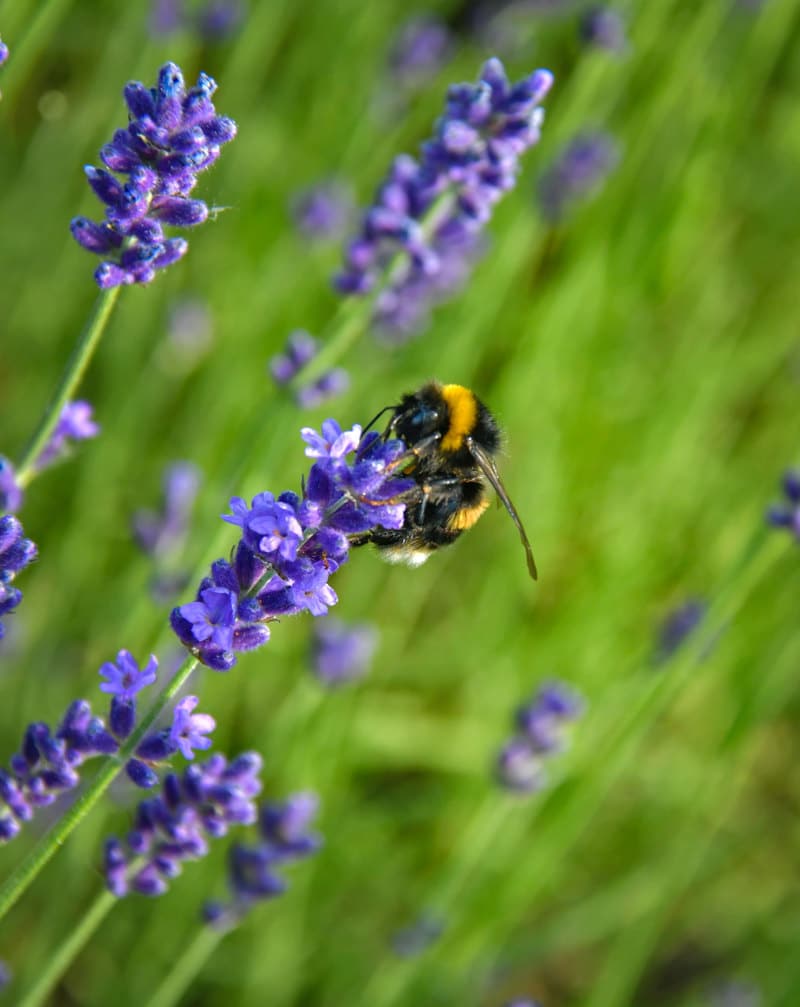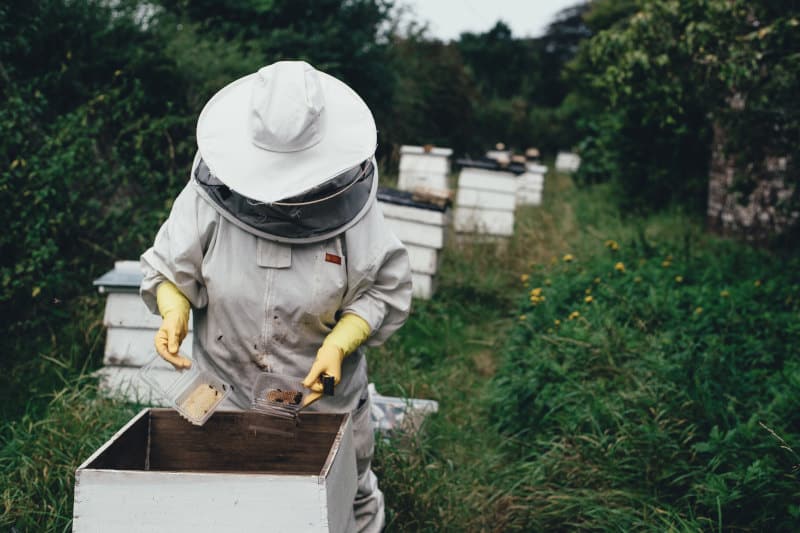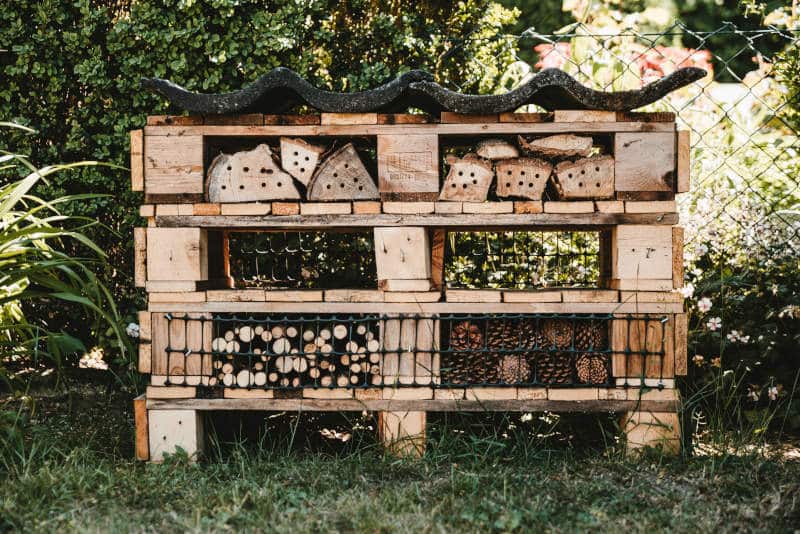Save The Bees – 10 Ways You Can Become More Bee-Friendly
If you are looking for ways that you can help save the bees, you are in the right place.
Bee populations all over the world have been on a rapid decline over the last couple of decades. There are over 20,000 species of bees worldwide, with over 350 species living in the UK and Ireland. These little powerhouses are intrinsic to the healthy survival of our ecosystems.
They provide us with food – honey – pollinate our flowers and flowering plants and help our food to grow. Without them, life on Earth would be very difficult.
Although we don’t know for sure what is causing the rapid decline of our bee species, we know that pollution, reduction of their habitat, monoculture agriculture, and our use of pesticides have a part to play. Bees are getting weaker and it is up to us to help save the bees as much as we can.
Luckily, there are things we can do at home that can help save the bees.
If you are interested in doing your bit to save the bees, keep reading.
1. Plant A Bee Garden
Regenerative farming seems to be slowing the decline of bee populations and there is a way you can join that movement.
By planting your very own bee garden.
You can create a haven using your entire garden or carve out a space in your garden. Planting a bee garden is one of the simplest ways to save the bees. Plus, you get a rainbow-colored garden which is beautiful to look at and spend time in.
Bees are particularly partial to purple flowers that are high in nectar and pollen. So, choose bee-friendly flowers and plants that will bloom throughout the year to provide them with a well-balanced year-long diet.

Planting a bee garden can help bees find flowering plants, fruit bearers, and vegetable plants. So, not only will the bees get a good meal, but they will also help your food gardens thrive.
If you can, choose plants that are native to your country. For those in the UK and Ireland, some popular bee-friendly plants are foxgloves, comfrey, rosemary, and lavender.
Planting a bee garden will also attract a lot of other pollinators, like butterflies, insects that keep pests at bay, and birds that feed on the insects. Your bee garden will become a whole ecosystem of its own providing refuge for several wild, native species.
2. Eliminate Pesticides
Our reliance on pesticides to reduce the pests that damage our crops has come at a cost. These pesticides leech into the soil and waterways. They have worked their way into the food chain and damaged our bee populations for decades.
These pesticides weaken our bees when they come into contact with flowers treated with pesticides and make bees more susceptible to fatal parasites. Pesticides are one of the greatest threats to our bees.
How about trying natural-based pest treatments in your gardens instead of the widely available synthetic chemicals we’ve become accustomed to using?
Sprinkling salt around the edges of your garden – avoiding contact with soil – can deter slugs or you can attract wild bird species into your garden to prey upon those bothersome slimy critters. If that doesn’t do the job, crushed eggshells, coffee grounds, and even copper tape can help keep slugs and snails away from your precious flowers.
Many local garden stores now sell organic, natural pesticides and herbicides that you can use to treat your garden without damaging the food chain.
If you want to help save the bees, you need to cut pesticides from your gardening routine and find a natural solution that doesn’t aid the decline of local bee populations.
3. Plant Some Trees
Just like a vegetable garden, bees are pollinators of our fruit trees. Some favorites are cherry, apple, plum, and pear. Without the bees, our fruit trees wouldn’t bare nearly as much fruit as we are used to if any.
If you have the space to plant these high in nectar trees, it can be an excellent way to save the bees and get something tasty in return.
However, many other flowering trees are wind-pollinated. So, why do we need those trees for bees?
Well, any tree that flowers is a great early spring source of pollen and nectar for the bees.
Trees can also provide much-needed habitat for bees. Whether they set up a home on the branches of a tree or use it as a safe place to rest along their journey.
Planting some trees not only helps save the bees but can help rebuild the number of trees that have been sadly lost over the years. You can find more info on this in our article about the importance of trees.
4. Support Your Local Beekeepers
Beekeeping has had some bad press in the last few years, with many people choosing to turn away from honey altogether. It’s true, industrial beekeeping sacrifices many bees for the pleasure of enjoying their delicious honey.
This is why it is so important to support local, ethical, and sustainable beekeepers if we want to help save the bees and keep their populations thriving.

Although much of our pollination needs are reliant on wild bees, domestically kept bees also play an important part in the growth of our food.
Many farmers and beekeepers who have paved the way with their sustainable and regenerative systems employ hives of bees on their land to improve pollination counts and, in turn, these bees are well looked after.
So, instead of turning away from honey completely, stay away from the mass-produced honey you can find in big chain supermarkets and find a local beekeeper if you want to save the bees. Not only will the honey be far more delicious, but it will also help fund beekeepers to keep protecting their bee colonies.
Another plus, many beekeepers are more than happy to show you around their bee hives and teach you all about what it takes to raise and support hive colonies.
5. Choose Organic
Synthetic fertilizers, herbicides, and pesticides have become commonly used in our food industries. We need bees to pollinate much of our food but we seem to be returning that kindness by weakening them and making them susceptible to parasites and disease thanks to our synthetic chemicals.
The saying ‘you are what you eat’ comes to mind and the products you place in your trolley will directly impact native bee populations.
Choosing organic produce where you can help save the bees and improve your own health by reducing the number of synthetic chemicals in your body.
Surprisingly, a lot of organic produce is price matched against regular food items and sometimes it can be even cheaper.
If you are up against a strict budget, look to swap out a few of your regular items with organic alternatives. The Dirty Dozen is a list of products that generally contain the highest level of pesticides and is a good place to start when switching to organic produce.
This list includes:
- Strawberries
- Spinach
- Apples
- Grapes
- Potatoes
- Tomatoes
- Peaches
6. Create A Bee Bath
Bees need water just like any other creature on our planet. If you have already created a bee-friendly garden, consider adding a bee bath to help save the bees even further.
Bee baths are incredibly easy to install and you probably already have most of the materials you need. A shallow container, some stones, and freshwater are the three basic ingredients needed for the perfect bee bath. Once you have made one, you need to find a safe place to leave it and once the bees find it, they will keep coming back over and over again.
Water is an essential element to bee life. Not only does it hydrate the bees, but it is also important for feeding their young larvae, keeping their hive cool, and also controlling the consistency of their honey. Providing fresh water is an easy way you save the bees.
7. Rewild Your Garden
Rewilding might sound like a buzz term but it could be one of the very things that can turn around the bleak-looking future and save the bees.
The premise is simple, our bee populations are declining because of the mass reduction of their natural habitat. By creating more naturally wild areas around our world we are giving the bees their homes back.
This can include planting native wildflower species, allowing fallen logs and branches to lie where they fall, and taking our hands off our lawnmowers and leaving them in the shed.
Now, rewilding your entire garden might not be something you can do. However, rewilding little bits of your garden is something we can all do.
That unused corner of your garden space or the borders of your garden can be left to grow as they naturally would.
Giving the bees native flowers to feed on and much more habitat to nestle in, rest in, and lay their larvae – because not all bee species live in hives.
You could even get involved in a local rewilding initiative. If you don’t have one, why not start your own and save the bees?
8. Build Bee Nests And Hotels
Not all bees are social creatures. There are over 300 species of solitary bees in Ireland and the UK alone. These bees survive without a hive and make up over 90% of the bee populations worldwide.
Solitary bees are generally harmless and they like to lay their eggs in little hollows, reeds, and twigs or dig tunnels into the soil.
They will lay their larvae in these grooves and seal them up with enough food to sustain them until they emerge into the world. That is where artificial bee nests and hotels are helping to save the bees.

Man-made bee hotels use hollow reeds and bamboo sticks to create the perfect place for these solitary bees to safely lay their babies.
Bee nests are another important thing you can create in your garden space to help support queen bees. The queens of many bee colonies will leave their hives and find a safe place to hibernate in the autumn. Come late winter time they will emerge and look for a place to restart their hive colony.
You can create artificial bee nests using nesting material, a large pot, some chicken wire, and a clean piece of tubing.
By creating safe places for hibernation and egg laying you will be helping to save the bees.
9. Become A Beekeeper
Ethical and sustainable beekeeping has become an important role in how we save the bees. Beekeepers not only support and care for their hives by keeping pests and diseases at bay. These professionals also record the behavior of their hives, helping us keep a close eye on bee populations.
Becoming a beekeeper isn’t reasonable for everyone but if you have the space and time, consider devoting a little of your free time to becoming a beekeeper.
Alternatively, you can help by donating to local beekeepers. This gives them the finances to save the bees and keep their colonies healthy, happy, and thriving.
10. Educate Others
Of all the things you can do to help save the bees, educating others is a big one. This could be teaching the children in your families the importance of bees and how we can save them. If you are a teacher, you could incorporate some lessons into your classroom about how to save the bees.
If you have friends or family members afraid of bees, you could help them overcome their fear by understanding these precious creatures. In turn, they may be less inclined to squish them when they come buzzing around.
Having a healthy understanding of bees and the role they play in our world working the way it does is paramount to their survival.
How Do You Help Save The Bees?
These are just ten simple ways you can help save the bees at home. Without bees, our world would be a lot less colorful and our plates a lot less full. The survival of our bee species is something we should all be working on if we want a world that is as bright for our children as it was for us.
What do you do to help save the bees?